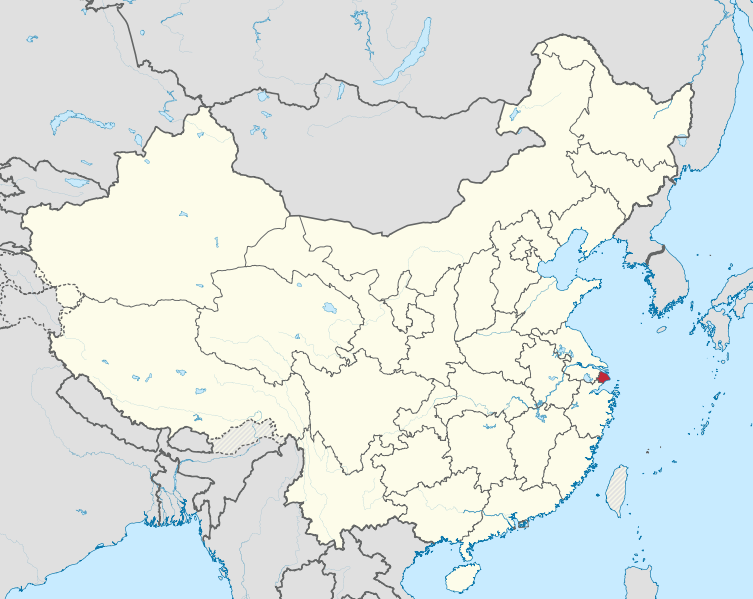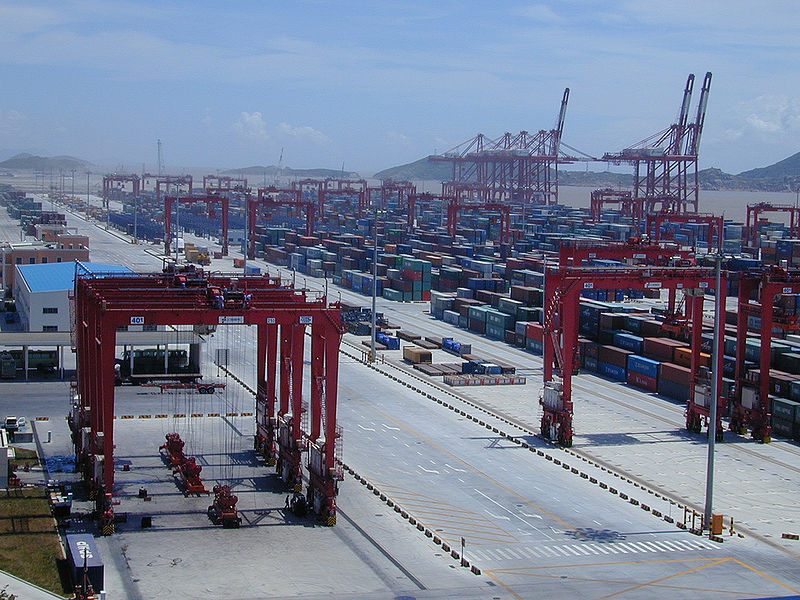<Back to Index>
- People's Republic of China Port of Shanghai, 29.05M TEUs
PAGE SPONSOR


The Port of Shanghai, located in the vicinity of Shanghai, comprises a deep sea port and a river port.
In 2010, Shanghai port overtook Singapore port to become the world's busiest container port. Shanghai's port handled 29.05 million TEUs, whereas Singapore port was a half million TEU's behind.
In 2011 Shanghai port broke a new historic record by handling over 30 million TEUs.
The Port of Shanghai faces the East China Sea to the east, and Hangzhou Bay to the south. It includes the heads of the Yangtze River, Huangpu River (which enters the Yangtze River), and Qiantang River.
The Port of Shanghai is managed by Shanghai International Port which superseded the Shanghai Port Authority in 2003.
Shanghai International Port Company Limited is a public listed company,
of which the Shanghai Municipal Government owns 44.23 percent of the
outstanding shares.
During the Ming Dynasty, what is now the city of Shanghai was a part of Jiangsu Province (with a small part in Zhejiang Province). While Shanghai had become a county seat in the Yuan Dynasty, it remained a relatively small town.
Its location at the mouth of the Yangtze led to its development as coastal trade developed during the Qing Dynasty, especially the Qianlong era. Gradually, the port of Shanghai surpassed the port of Ningbo and the port of Guangzhou to became the largest port of China at the time.
In 1842, Shanghai became a treaty port, thus developing into an international commercial city. By the early 20th century, it was the largest city in the Far East, and the largest port in the Far East.
In 1949, with the Communist takeover in Shanghai, overseas trade was cut dramatically. The economic policy of the People's Republic had a crippling effect on Shanghai's infrastructure and capital development.
In 1991, the central government allowed Shanghai to initiate economic
reform. Since then, the port of Shanghai has developed at an increasing
pace. By 2005, the Yangshan deep water port was built on the Yangshan islands, a group of islands in Hangzhou Bay, linked to Shanghai by the Donghai Bridge.
This development allowed the port to overcome shallow water conditions
in its current location, and to rival another deep water port, the
nearby Ningbo - Zhoushan port.
The port of Shanghai includes 5 major working zones:
- Yangtze River estuary
- Huangpu River mouth at Wusongkou (Chinese: 吴淞口)
- Waigaoqiao (外高桥) in Pudong
- Yangshan deep water port (Hangzhou Bay & East China Sea)
- Pudong coastline (East China Sea)
1984: 100 million tons (mt) moved; 1999: 186 mt; 2005: 443 mt; 2006: 537 mt; 2007: 561 mt; 2008: 582 mt of cargo and 28 million TEU; 2009: 590 mt.